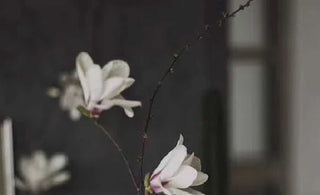
Dance and Movement in Eastern Art
Within the expansive canvas of Eastern art, the rhythmic interplay of dance and movement emerges as a dynamic force, weaving tales of cultural heritage and spiritual expression. This essay explores the profound role of dance within Eastern art, delving into the intricate choreography that breathes life into traditional forms, creating a visual symphony that transcends temporal boundaries.
In the tapestry of Eastern art, dance transcends its physical dimensions, evolving into a profound manifestation of the intricate connection between the artist, the art, and the cultural backdrop. Rooted in ancient civilizations, traditional dance forms emerge as a visual language, allowing narratives, emotions, and spiritual expressions to unfold organically, unbound by the limitations of verbal communication.
Within this cultural milieu, each movement becomes a stroke on the canvas of tradition, conveying stories that span generations. The rhythm of a dancer's footsteps, the elegance of a gesture, and the grace of a pose speak volumes, creating a narrative that resonates beyond the immediate physicality of the performance. This symbolic choreography becomes a vessel for cultural heritage, encapsulating the essence of Eastern art—a language that communicates the intangible and expresses the profound through the fluidity of movement. As an integral component of this aesthetic realm, dance serves as a bridge that connects the tangible and intangible, allowing the artist to convey the richness of cultural narratives through the eloquence of bodily expression.
The allure of Eastern dance lies in its profound ability to encapsulate the ephemeral nature of existence. Within the delicate sway of a classical dancer's hand or the flowing movements of a martial artist, Eastern art captures the transient essence of life, translating it into rhythmic nuances that echo the fleeting beauty inherent in the dance of existence. Each gesture, every step taken, becomes a brushstroke on the canvas of time—an artistic expression that illuminates the impermanence of life and the ever-changing nature of the human experience.
In traditional Eastern dances, symbolism emerges as a powerful narrative tool. The deliberate incorporation of hand gestures, known as mudras in classical Indian dance, or the symbolic animal imitations in traditional Japanese Noh theater, adds layers of profound meaning to the choreography. These symbolic elements elevate movement beyond mere physical expression, transforming it into a visual language. Through this language, the artist communicates intricate ideas and narratives with precision and subtlety, crafting a dance that becomes a tapestry of symbolic richness.
As dancers engage in these symbolic movements, they traverse the realms of tradition and artistic expression, navigating the delicate balance between cultural heritage and creative innovation. The symbolic choreography not only captures the essence of specific cultural narratives but also serves as a bridge that connects the past with the present, allowing the dance to evolve as a living expression of the ever-unfolding human story. Thus, in the mesmerizing interplay of movement and symbolism, Eastern dance becomes a timeless reflection of the transient beauty that defines the intricate dance of existence.
Beyond the realms of storytelling, dance in Eastern art often finds its roots in spirituality. Many traditional dance forms are deeply intertwined with religious practices, serving as a medium for spiritual transcendence. The whirling dervishes of Sufi mysticism, for example, use their circular movements to achieve a trance-like state, symbolizing the soul's journey towards spiritual enlightenment. In this context, dance becomes a sacred ritual, a means of connecting with the divine and expressing the ineffable through physical motion.
Within the realm of Eastern art, the enthralling connection between dance and nature unfolds as a captivating facet. Traditional East Asian art, exemplified in forms like the Japanese Noh and Kabuki theater, embodies a profound synthesis where movements emulate the rhythmic cadence of the natural world. The choreography deliberately mirrors the gentle swaying of a cherry blossom branch or the graceful glide of a crane in flight, rendering the performers conduits for the harmonious expression of elemental forces. In this nuanced interplay, dance transcends its role as a mere artistic expression, becoming a bridge that seamlessly connects the human form with the surrounding world.
The deliberate mimicry of nature's rhythms in Eastern dance not only showcases an artistic homage to the environment but also blurs the conventional boundaries between the performer and the natural elements. As dancers embody the spirit of the cherry blossom or the elegant flight of a crane, they become vessels through which the beauty of the natural world is channeled. This symbiotic relationship elevates Eastern dance beyond a mere spectacle, transforming it into a poetic expression that harmonizes with the timeless cadence of nature, inviting the audience into a transcendent experience where the boundaries between art and the environment dissolve into a seamless dance of interconnected beauty.
As Eastern art evolves in contemporary contexts, the traditional forms of dance continue to influence and inspire innovative expressions. The fusion of classical dance with modern choreography, as seen in contemporary Bollywood dance or experimental interpretations of traditional Chinese opera, represents a dynamic dialogue between the old and the new. This interplay allows Eastern artists to breathe new life into age-old dance forms, ensuring their relevance and resonance with evolving audiences.
In conclusion, the intricate dance and movement within Eastern art form a tapestry that spans centuries and civilizations. From the sacred rituals of traditional dance to the innovative expressions of contemporary choreography, movement in Eastern art remains a potent vehicle for cultural preservation, storytelling, and spiritual exploration. The rhythmic gestures and symbolic choreography encapsulate the essence of Eastern aesthetics, embodying a visual symphony that continues to captivate and inspire across the boundless expanse of time and culture.
























